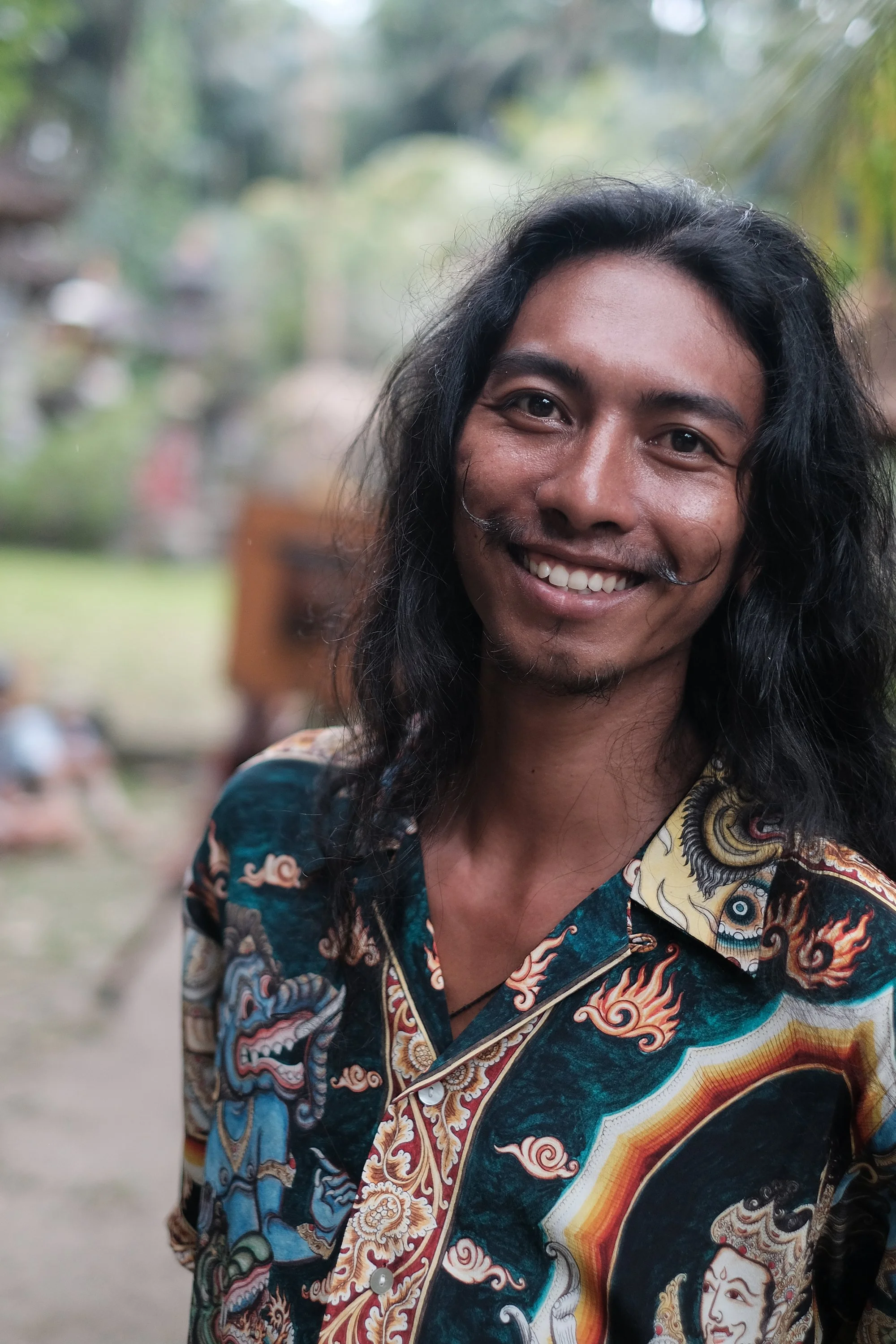Gajah Waktra: The Elephant-Headed Guardian
GAJAH WAKTRA - Ink & Natural pigments on paper, 75 x 73 cm, by Deknoo Adnyana Dass 2024
We’ve been fortunate to collaborate for many years with our good friend and long-time creative partner, Deknoo, an artist based in the cultural heart of Ubud, Bali. His latest work for us, Gajah Waktra, invites us deep into the world of Balinese myth through intricate pen-and-ink linework enriched with natural pigments on paper.
The piece is a diptych, two panels that together unfold a story. On the right, we are met with the haunting image of Prince Sutasoma disappearing into the jaws of a giant head. On the left, a towering figure with the head of an elephant stands alongside a serpent and a tigress, each poised with symbolic weight.
Painting process
Deknoo Adnyana Dass
The work draws on the 14th-century Old Javanese poem of Sutasoma, set in the era of the Majapahit Empire. The tale follows the Buddhist prince Sutasoma, who rejects royal life to pursue a path of peace and spiritual devotion.
During his journey, Sutasoma encounters King Purusada, a demon cursed with an unquenchable hunger for human flesh after tasting it by accident. To heal his wounded leg, Purusada vows to sacrifice 100 kings to the god Kala. When monks beg Sutasoma to kill the demon, he refuses violence and chooses a different path.
Along the way, Sutasoma meets Gaja Waktra, the elephant-headed giant of Deknoo’s left panel. They clash, but instead of bloodshed, Sutasoma’s meditation and compassion win the giant over, turning him into a disciple. The same fate befalls a mighty serpent and a starving tigress—though in the latter case, Sutasoma offers his own life to feed her cubs. The god Indra, moved by his selflessness, restores him to life and transforms the tigress into yet another follower.
The story culminates in Purusada capturing Sutasoma as his final offering to Kala. In a moment of ultimate sacrifice, Sutasoma offers himself willingly. But Kala cannot consume him—neither swallow nor spit him out—until finally, he releases his aggression.
Through Gajah Waktra, Deknoo captures this timeless parable of peace triumphing over violence, rendered with breathtaking detail and reverence for its cultural roots. Each line and pigment stroke is not just artistry, but a bridge between myth and the present.




